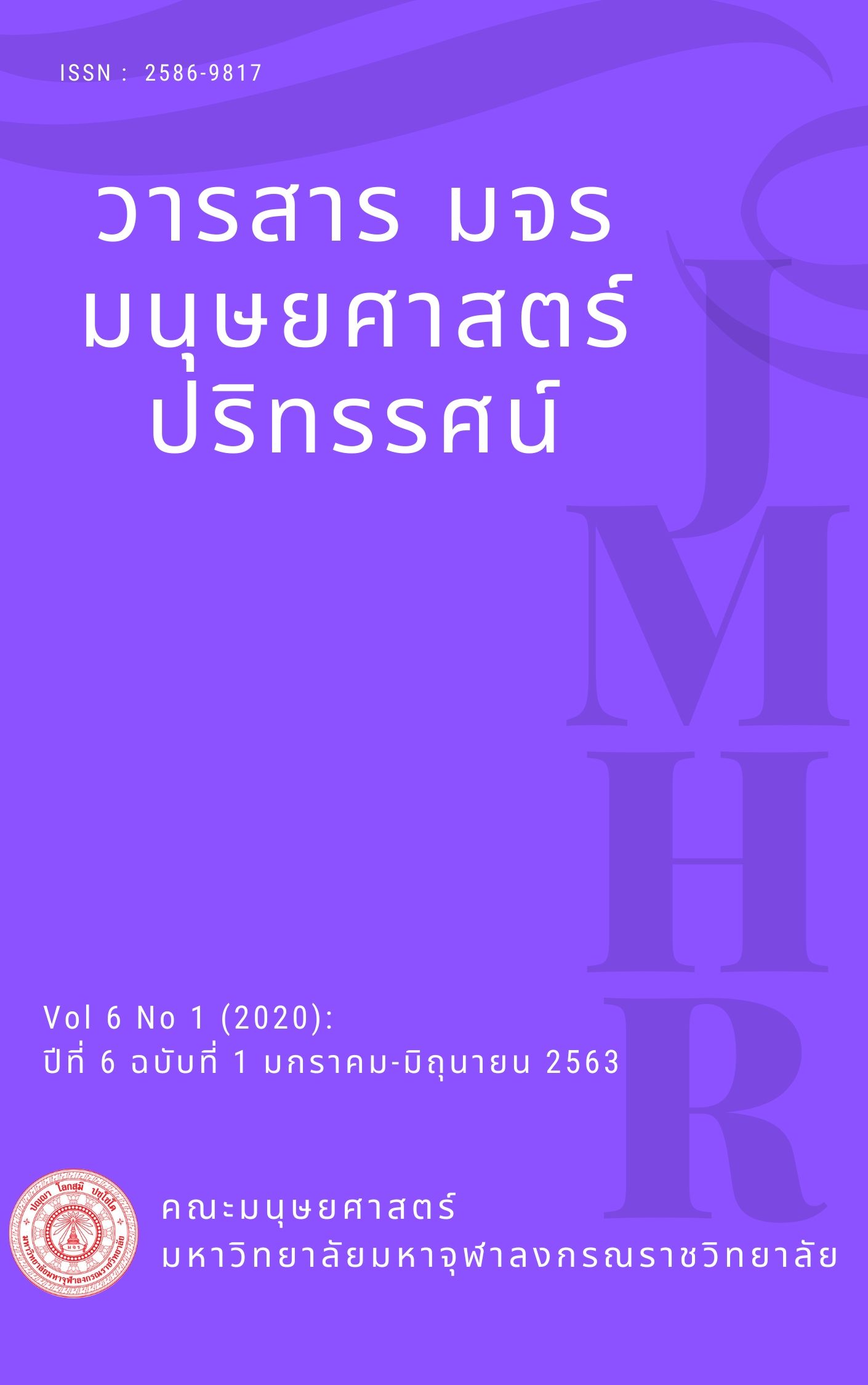การจัดการเรียนรู้ตามแนวพุทธศาสตร์ในศตวรรษที่ 21
คำสำคัญ:
การจัดการเรียนรู้, การเรียนรู้ตามแนวพุทธศาสตร์, ศตวรรษที่ 21บทคัดย่อ
บทความฉบับนี้ มีวัตถุประสงค์เพื่อวิเคราะห์การจัดการเรียนรู้ตามแนวพุทธศาสตร์ในศตวรรษที่ 21 มีผลการค้นคว้าสำคัญ คือ การสอนโดยครูจะต้องทำให้เด็กที่จะรักครูตลอดชีวิตและมีเป้าหมายในการสอนที่จะทำให้เด็กมีทักษะชีวิตและทักษะด้านไอทีเป็นการเรียนรู้ได้ด้วยตนเองอย่างต่อเนื่อง เป็นสิ่งใหม่ที่ยังอยู่ในกระบวนการทดลอง สิ่งใหม่ที่นำมาปรับปรุงใหม่ทดลองใช้และเผยแพร่ นวัตกรรมทางด้านการเรียนการสอนแยกออกเป็น 2 ประเภท คือ นวัตกรรมประเภทผลิตภัณฑ์หรือสิ่งประดิษฐ์และนวัตกรรมประเภทรูปแบบ เทคนิค และวิธีการสอน นอกจากนี้ยังมีนวัตกรรมประเภทเสริมสร้างคุณลักษณะของผู้เรียนด้านจิตพิสัย ได้แก่ ความมีวินัย ความซื่อสัตย์ ความรับผิดชอบ ความมีน้ำใจ การบริโภคด้วยปัญญาในวิถีไทย โดยครูต้องสอดแทรกเพื่อการดำรงชีวิตในศตวรรษที่ 21 ประกอบด้วย ทักษะด้านการเรียนรู้และคิดค้นสิ่งใหม่ ๆ ใช้สื่อที่หลากหลายในการจัดกระบวนการเรียนรู้ และสาระสำคัญในการดำรงชีวิตและการทำงานโดยใช้หลักธรรมทางพระพุทธศาสนา การพัฒนานวัตกรรมการเรียนการสอน เพื่อเป็นแนวทางปฏิบัติสู่ความเป็นคนดี คนเก่ง และมีความสุขตามศักยภาพของผู้เรียนยุคใหม่ทั้งในด้านร่างกาย จิตใจ อารมณ์ สังคม และสติปัญญา ตลอดจนการส่งเสริมการปลูกฝังคุณธรรมจริยธรรมให้แก่นักเรียน รวมถึงการปลูกฝังประชาธิปไตยในโรงเรียนด้วยจึงเป็นแนวทางสำคัญเพื่อสร้างจิตสำนึกให้เด็กและเยาวชนยุคใหม่ให้รู้เท่าทันการเปลี่ยนแปลงต่าง ๆ ในด้านความรู้ ทักษะ ให้สามารถอยู่ร่วมกันในสังคมด้วยความสงบสุขและเจริญก้าวหน้าของประเทศชาติสืบต่อไป
เอกสารอ้างอิง
กรมวิชาการ. (2551). การจัดสาระการเรียนรู้พระพุทธศาสนา. กรุงเทพมหานคร: คุรุสภาลาดพร้าว.
กิตติชัย สุธาสิโนบล. (2558). การจัดการเรียนการสอนแบบพุทธะเพื่อพัฒนาคุณธรรมจริยธรรมสำหรับนักเรียน. กรุงเทพฯ: บริษัท คอมเมอร์เชียล เวิลด์ มีเดีย จำกัด.
ประภาศรี สีหอาไพ. (2540). พื้นฐานการศึกษาทางศาสนาและจริยธรรม. กรุงเทพฯ: โรงพิมพ์จุฬาลงกรณ์ราชวิทยาลัย.
พระพรหมคุณาภรณ์ (ป.อ. ปยุตโต). (2539). วินัยเรื่องที่ใหญ่กว่าคิด. กรุงเทพฯ: โรงพิมพ์คุรุสภา.
พระพรหมคุณาภรณ์ (ป.อ. ปยุตโต). (2550). วิธีคิดตามหลักพุทธธรรม. กรุงเทพฯ: ธรรมสภา.
พุทธทาสภิกขุ. (2516). อิทัปปจยตา. กรุงเทพมหานคร: ธรรมทานมูลนิธิ.
มหาจุฬาลงกรณ์ราชวิทยาลัย. (2547). โรงเรียนวิถีพุทธ (พิมพ์ครั้งที่ 2). กรุงเทพฯ: สำนักพิมพ์มหาจุฬาลงกรณ์ราชวิทยาลัย.
สำนักเลขาธิการสภาการศึกษา. (2550). รายงานเบื้องต้นการเสริมสร้างคุณธรรมในระบบการศึกษาไทย.กรุงเทพฯ: วี.ที.ซี.คอมมิวนิเคชั่น.
สิริวรรณ ศรีพหล. (2552). การจัดการเรียนการสอนกลุ่มสาระการเรียนรู้สังคมศึกษา ศาสนา และวัฒนธรรม. นนทบุรี: โรงพิมพ์มหาวิทยาลัยสุโขทัยธรรมาธิราช.
สุมน อมรวิวัฒน์. (2513). พุทธวิธีสอน. เอกสารการประชุมทางวิชาการพระพุทธศาสนากับการศึกษาในประเทศไทย. กรุงเทพฯ: กรมการศาสนา.
แสง จันทร์. (2524). การสอนจริยธรรมในโรงเรียนกรุงเทพมหานคร. กรุงเทพฯ: การศาสนา.

ดาวน์โหลด
เผยแพร่แล้ว
รูปแบบการอ้างอิง
ฉบับ
ประเภทบทความ
สัญญาอนุญาต
ลิขสิทธิ์ (c) 2020 วารสาร มจร มนุษยศาสตร์ปริทรรศน์

อนุญาตภายใต้เงื่อนไข Creative Commons Attribution-NonCommercial-NoDerivatives 4.0 International License.





